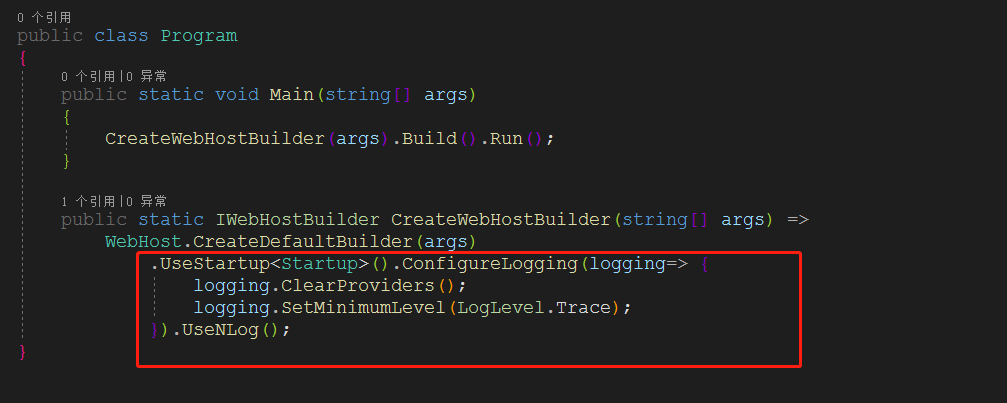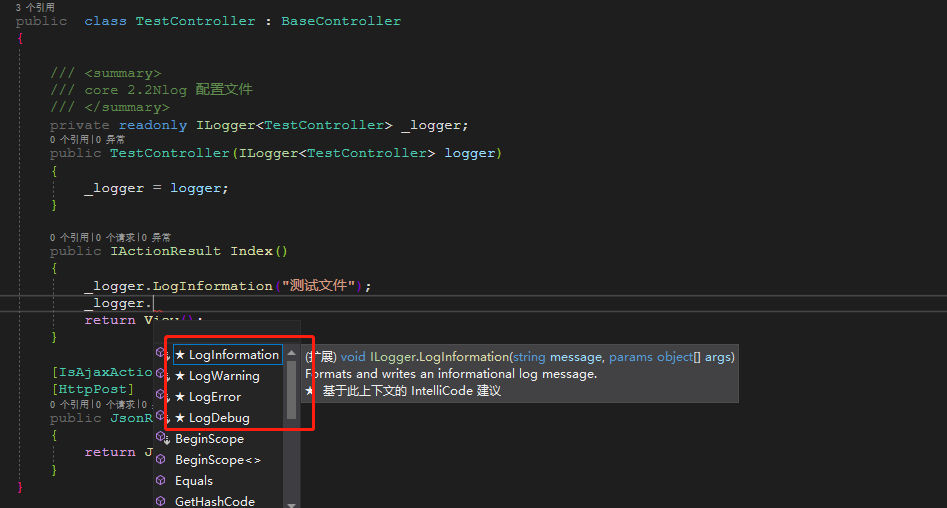1:新建解决方案

2:在Nuget上面引用

3:修改Program.cs文件

4:新增nlog.config文件 (此配置文件可参考官网)

<?xml version="1.0" encoding="utf-8" ?>
<nlog xmlns="http://www.nlog-project.org/schemas/NLog.xsd" xmlns:xsi="http://www.w3.org/2001/XMLSchema-instance" autoReload="true">
<targets>
<target name="defaultlog" xsi:type="File" keepFileOpen="false" encoding="utf-8" fileName="${basedir}/logs/${level}${shortdate}.log" maxArchiveFiles="100" layout="${longdate}|${level:uppercase=true}|${logger}|${message}" />
<!--fileName值——表示在程序运行目录,分日志级别按天写入日志文件-->
<!--maxArchiveFiles值——日志文件最大数量,超出则删除最早的文件-->
<!--layout值——日志内容格式:时间+日志级别+LoggerName+日志内容-->
</targets>
<rules>
<!--支持将任意级别、任意LoggerName的日志写入target:defaultlog-->
<!--其中*就表示任意,可以改为"项目命名空间.*",则只输出对应命名空间下的日志。在Info级别尤为明显-->
<logger name="*" minlevel="trace" writeTo="defaultlog" />
</rules>
</nlog>
5:在Controller中的使用

6:生成的文件在当前解决方案bin目录下面(\bin\Debug\netcoreapp2.1\logs)





















 357
357











 被折叠的 条评论
为什么被折叠?
被折叠的 条评论
为什么被折叠?








